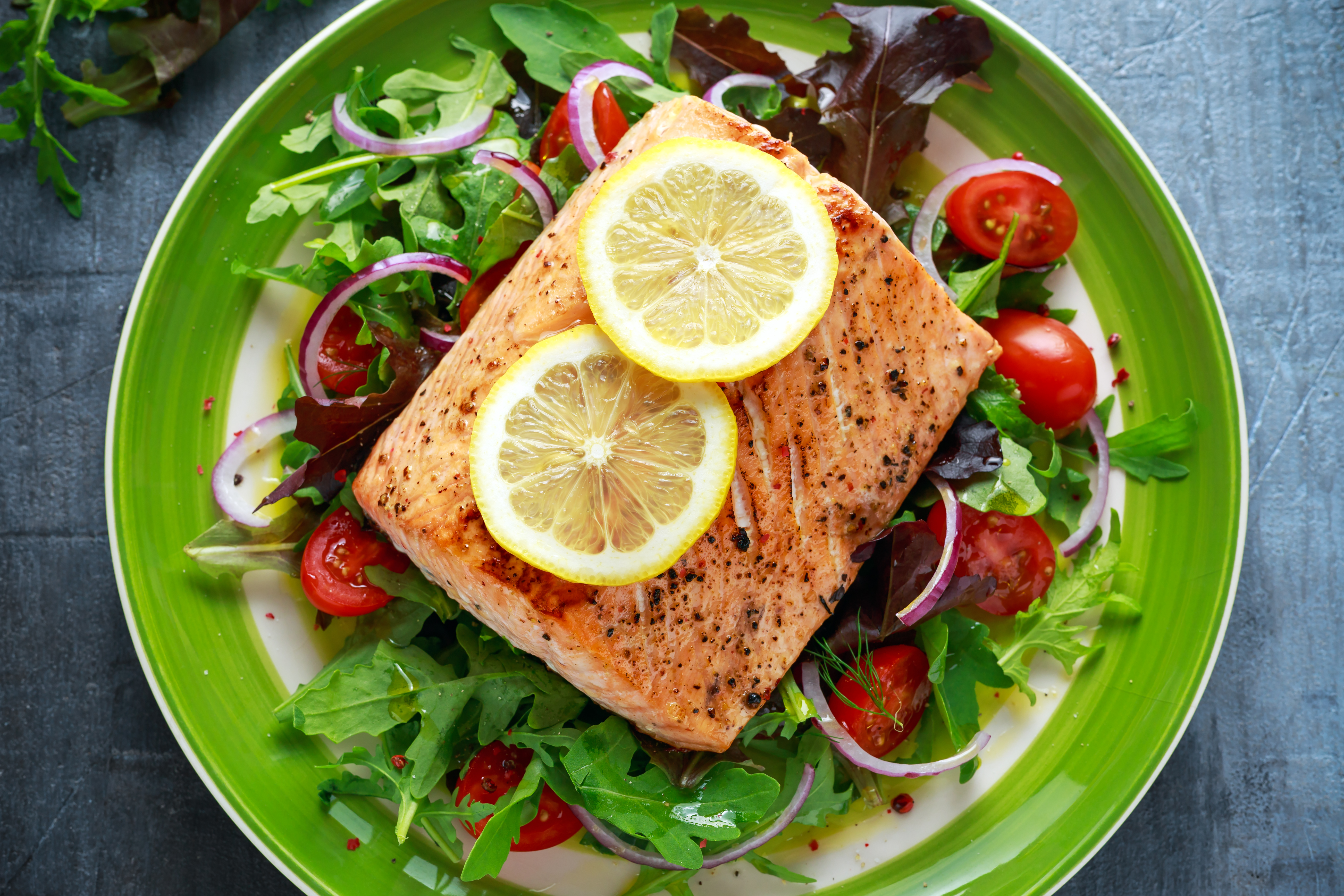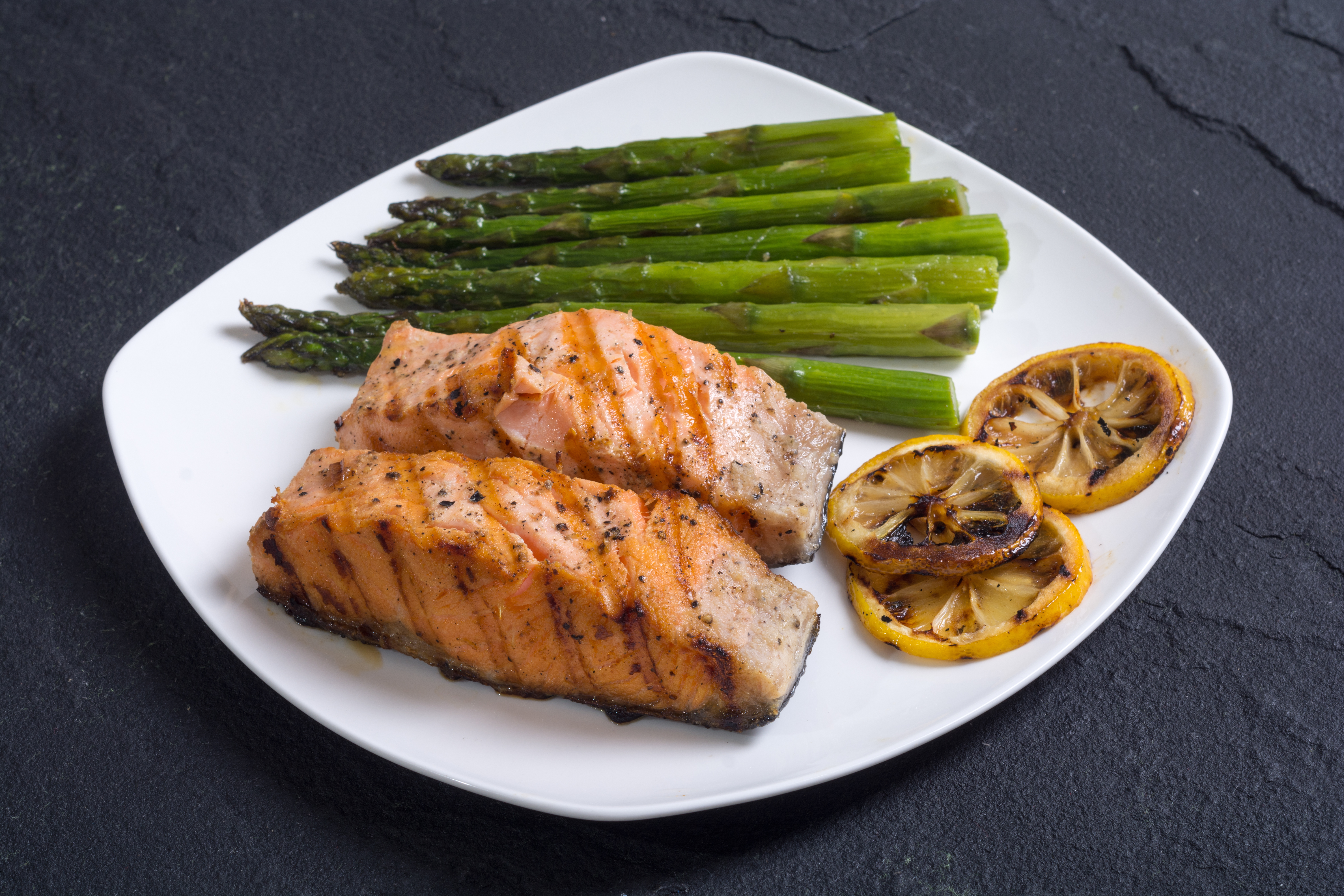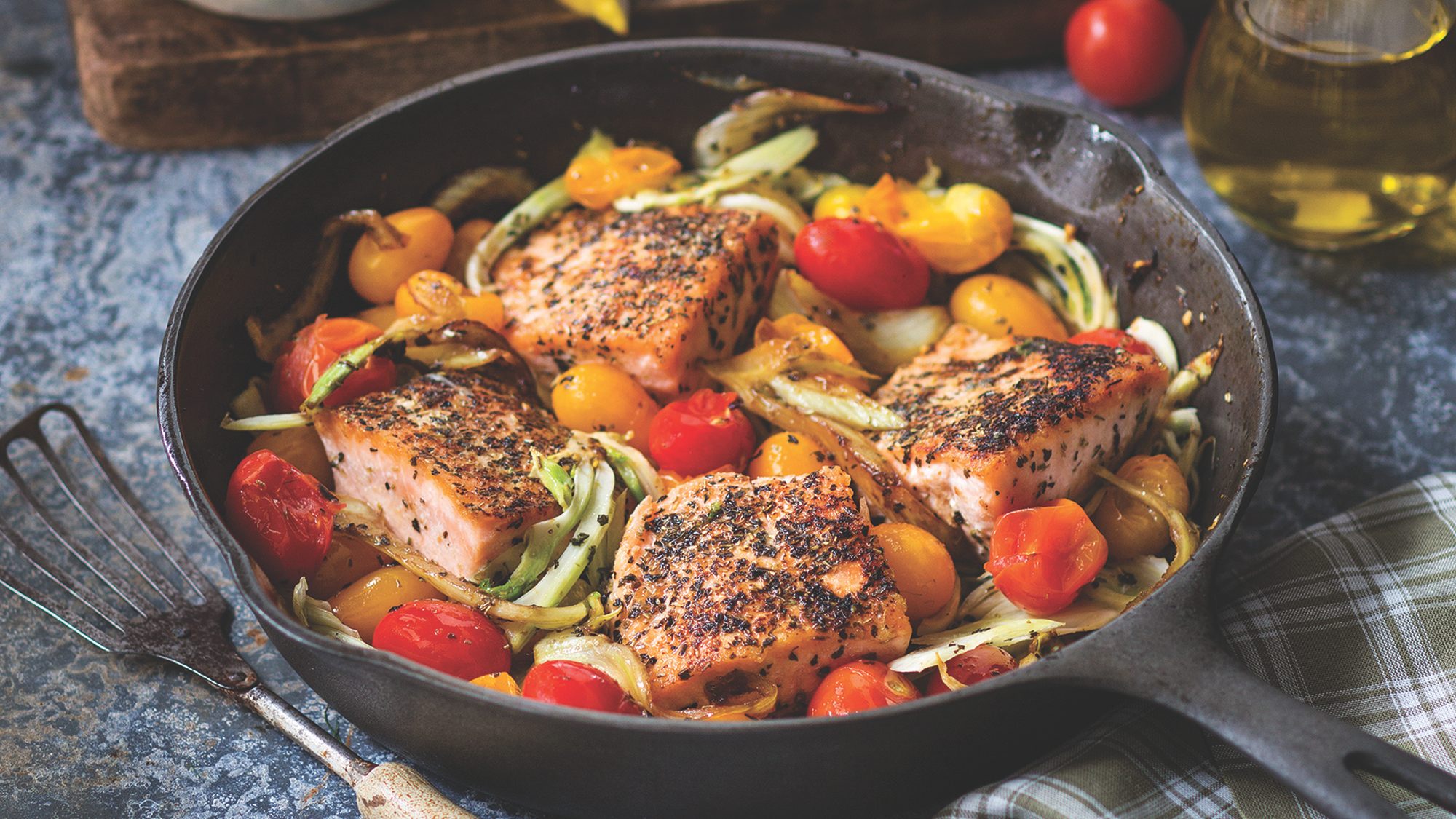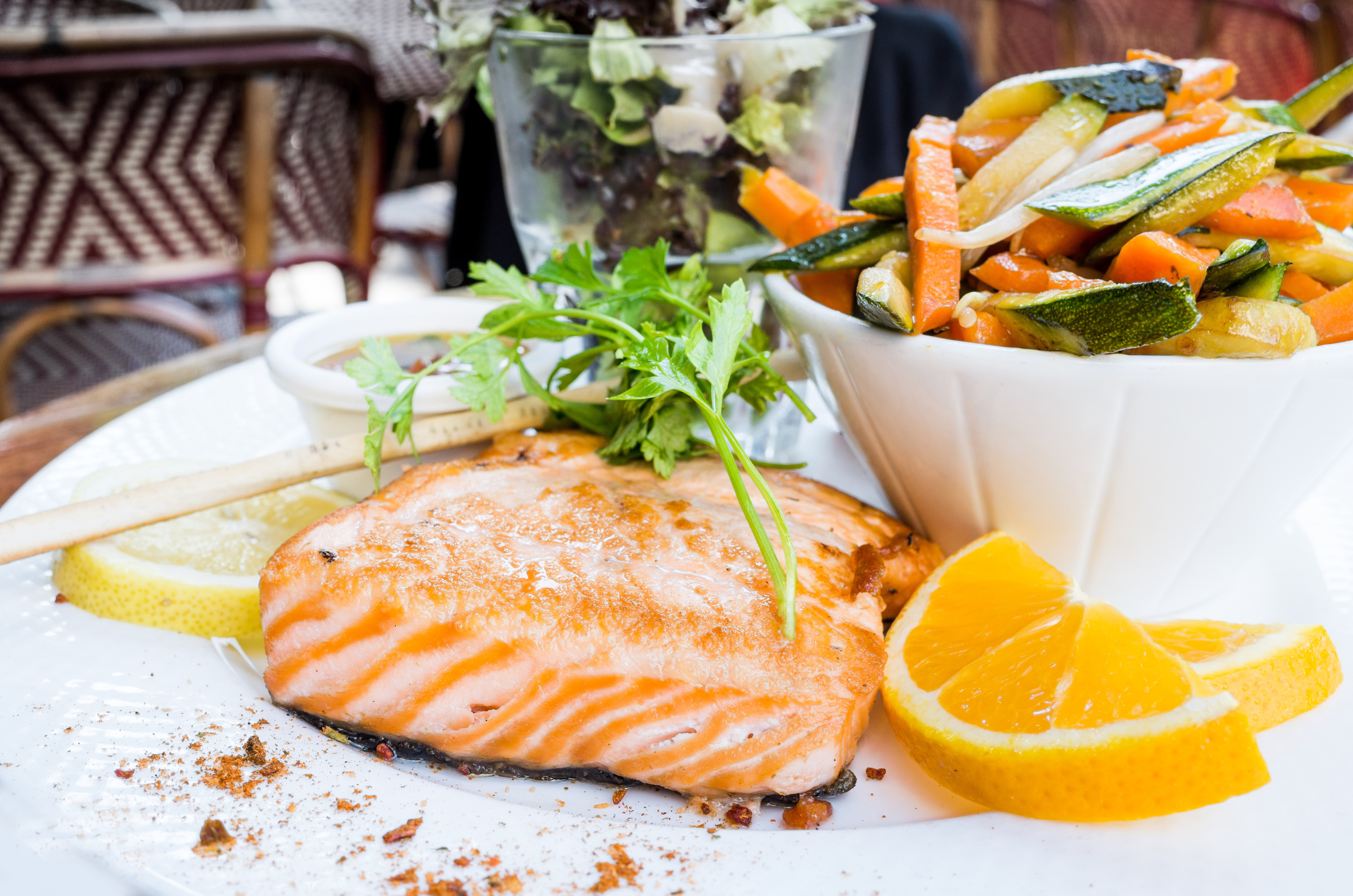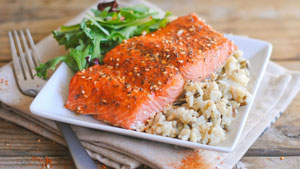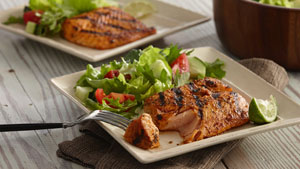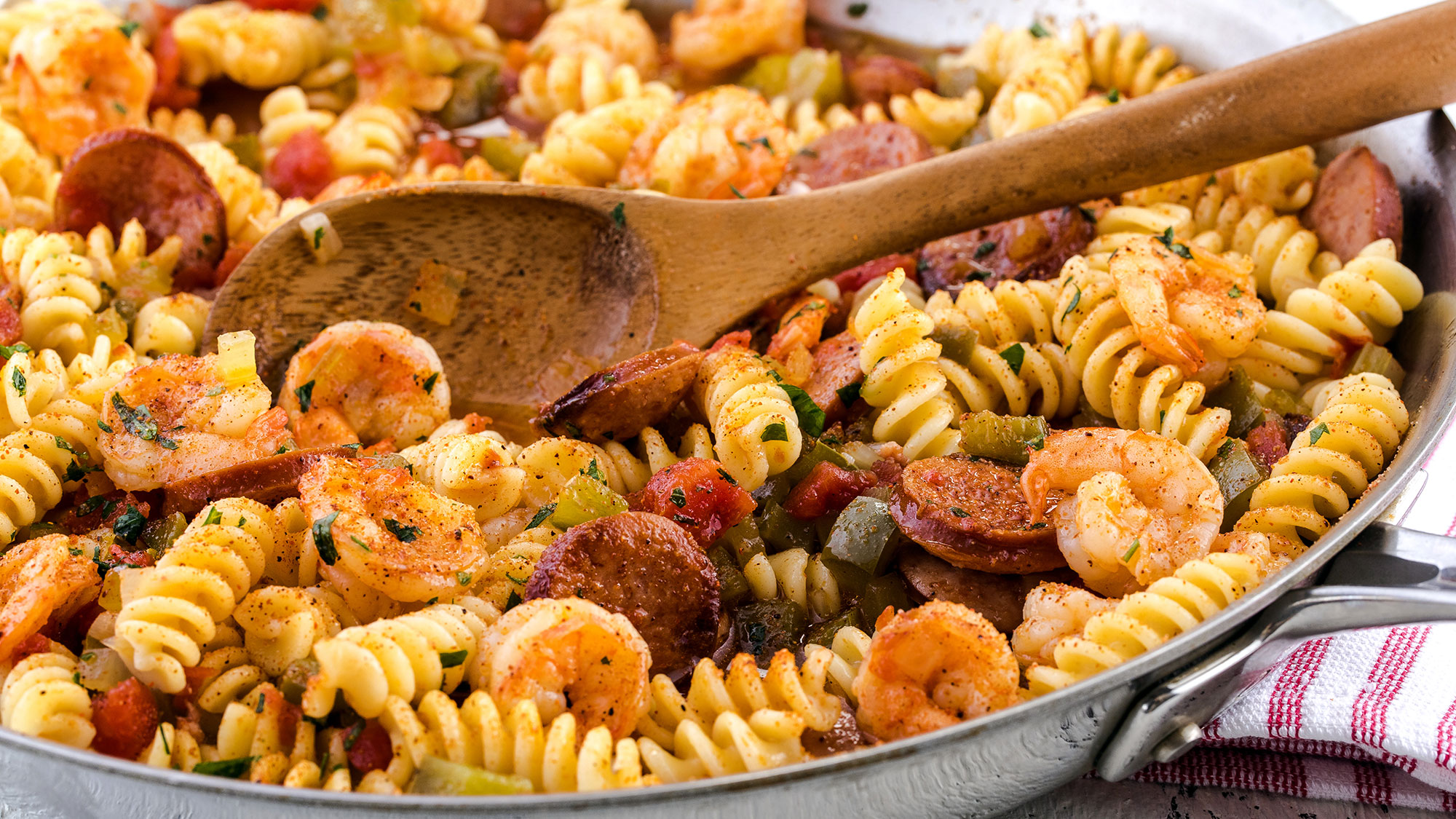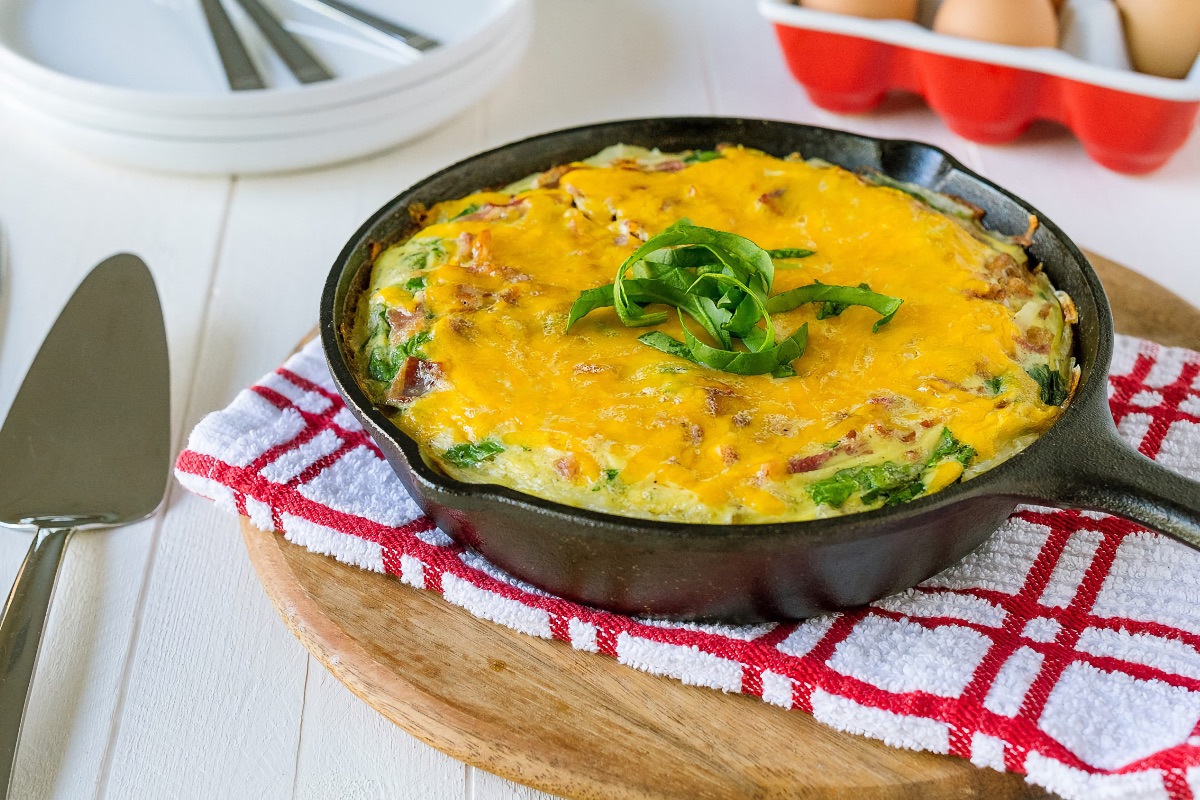Chicken breast might steal the spotlight as a versatile suppertime staple—but in our minds, salmon reigns supreme. For one thing, it’s extremely filling, thanks to all that fat and protein, according to the U.S. Department of Agriculture. And between sauces, seasonings and cooking techniques, you can make virtually limitless variations on salmon to avoid getting bored.
Best of all, cooking salmon is incredibly simple, once you get the hang of it. Read on to learn how to find the best filet and - most importantly- how to turn it into a scrumptious meal your family will love.
How to Pick the Perfect Salmon
While frozen salmon can work in a pinch, you'll get the best-tasting meal if you pick up a fresh cut. For the most convenience, select either a large filet that you can cut into multiple portion, or a thicker "supreme” sold as single-serving portions. If you’re going to be grilling, consider going with a salmon steak, which is cut from a cross-section of the fish.
Types of Salmon
As for what type of salmon you buy - Atlantic or Pacific? Farmed or wild-caught? It’s all a matter of personal preference. Atlantic salmon is mellow in flavor and budget-friendly, while Pacific salmon comes at a premium, but offers richer flavor. Wild-caught salmon tends to be leaner (without sacrificing those omega-3s) while farmed means getting a heartier, fattier filet.
No matter what type of salmon you choose, practice food safety when you’re shopping for fresh fish. Pick up your fish as your last stop at the grocery store before hitting the checkout, and store it in a cooler bag on the way home. Once you’re home, put your salmon in the fridge ASAP and cook it within 2 days.
How to Prepare Salmon
Many salmon filets come deboned, but there’s a chance you’ll get one with small pin bones still in the meat. To check, simply run your fingers over the filet against the grain of the meat to feel for them. Removing pin bones is easy. Simply grasp the end of the bone with a pair of needle-nose pliers or sturdy tweezers, then pull firmly with the grain of the meat. Continue removing bones up the filet, then check your work by running your fingers against the grain again to make sure you didn’t miss any.
How to Season Salmon
Now it’s time to get creative! Salmon’s subtle flavor means it can pair well with any number of seasonings. Keep it simple with salt, pepper and a sprinkle of garlic powder, or try a squeeze of lemon juice and a dusting of dill for a simple-yet-flavorful filet. If you’re craving a deeper complexity of flavor, try seasoning it with a wine, herb and lemon seafood rub, or a dusting of a seasoning blend, like curry powder.
Alternatively, you can dress up your salmon with a sauce or glaze. A peppery soy glaze adds an Asian-inspired zing to your fish, while topping your salmon with orange salsa adds a burst of fresh flavor (and the salsa can double as a yummy salad dressing!)
How to Cook Salmon
The cooking method you choose also adds to the flavor of your meal, and makes all the difference between a satisfyingly crispy filet vs. a moist and tender cut. We love these cooking techniques:
Baking
Simple baked salmon makes it easy to get dinner on the table with minimal effort. Make salmon the star of a sheet pan dinner or envelope salmon with veggies in parchment paper for fish en papillote (easy cleanup!).
Grilling
Get ultra-flavorful salmon in minutes by grilling. Simply add your seasoned filets to an aluminum foil grilling tray (this prevents mess on the grill) and you’ll have delicious salmon in minutes. If you’re feeling more adventurous, grill your salmon on a water-logged cedar plank for a filet with smoky flavor.
Pan Frying
If you love crispy skin, pan-frying is a must. It’s also dead simple - just season with salt, pepper and any other seasonings that appeal to you, add a pat of butter to the pan, then sear on each side until cooked through.
Poaching
Cooking under low, moist heat yields intensely tender salmon. This cooking method allows for twice the customization, since you can add seasonings to the poaching liquid for a subtle flavor infusion as well as add seasoning directly to the filet before cooking for a more potent flavor boost.
Let the salmon rest for 5 minutes before serving, then enjoy. And if you’re lucky enough to have leftovers, store ‘em in the fridge for up to three days.
Looking for Flavor Inspiration?
Try one of these yummy salmon recipes for an unforgettable dinner tonight.
Tomato, Garlic and Wine Salmon
Poached Salmon with Wilted Spinach



